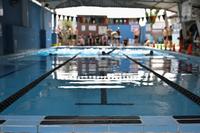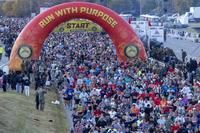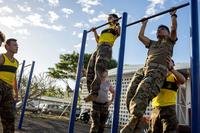Military recruiters often have a hard time finding the right approach to fitness training.
Recruits on the lower end of the fitness spectrum typically need a lifestyle change just to meet the minimum fitness, height and weight standards. These people need to build healthier habits by moving more and eating better.
Recruits on the upper end of the fitness spectrum, who are often preparing for rigorous special ops-level training, are prone to over-training, where they injure themselves and never learn how to properly recover for optimal performance.
When recruiters combine these two groups together in a single PT session, one group is working too hard and facing potential overuse injuries, while the fitter group is falling out of shape when they should be preparing for follow-on training like spec ops selections.
Both groups need some form of fitness education so they understand the basics of nutrition for energy and recovery, the need for hydration to avoid becoming a heat casualty, the importance of sleep, and why they need to train enough to perform well above the minimum fitness standards.
Fitness Is Relative
Fitness is relative. Candidates represent a wide spectrum of fitness levels, and those varying levels need to be considered when preparing a group for military service. One person's warmup may be another's complete workout.
The military must test, evaluate and acknowledge these differences with each incoming recruit. The first step of the military screening process is medical qualification for service. That will be followed by evaluation of educational performance, ASVAB testing and criminal record screening.
The final step in joining the military has become the toughest hurdle for new recruits. Meeting a height and weight standard and passing a variety of basic fitness tests have become a challenge. Recruiters are having trouble with finding qualified applicants because so many have trouble with the fitness requirements.
Start Your Education Early at Military.com Fitness Pages
Do Your Research
Your training requirements will vary significantly, depending on the branch of service you choose and the job you want. Being fit enough to handle basic training or boot camp should be your first goal. You can use the service fitness test for that model, but add in specifics to your branch of service training.
If you want to join the Navy or Coast Guard, know that there is a swimming and treading test. Even though the Air Force is a highly technological branch of service, you will still run and do high-repetition calisthenics each day. If you're in the Army or Marine Corps, know that you will be running and rucking significantly more than you would be in the other services' basic training.
Make sure you are meeting the standards of the fitness test you must take during basic training, as well as the ones you will take on active duty. Make sure you understand the specific standards of your chosen service's basic training and practice the longer runs, rucks and swims.
Eat for Performance
Eating gives us the fuel needed to perform each day, especially during the long training days in basic training and beyond. The food and drinks you choose to consume will determine your performance on the next day of training and affect your recovery from today's training.
Fitness Training
Regardless of your military career goals, you will need to learn to assess yourself and determine your current strengths and weaknesses. You can then structure more cardio endurance if you are a strength athlete, or more strength training if you are an endurance athlete. We all come into the tactical fitness world with a few strengths and weaknesses that are directly related to our athletic history.
Nutrition and Hydration
If your career choice requires weight loss, there is a combination of training you need to start right away: Move more and eat better and less to lose weight. New fitness and healthful eating and drinking habits are essential parts of the equation for success, so start making those changes well before you take the oath to serve.
Develop strategies for staying cool and hydrated, and know the need to add electrolytes to your day. Learning the dangers of heat exposure can go a long way to improving your performance in the military. In fact, a few hours in the heat without water will drop the best trained athletes.
Whether you need to up your game and get into shape to meet military standards or you need to pull back the reins so you properly recover to be in prime condition for spec ops-level performance standards, keep learning the fitness skills you will need for success.
The information in the articles linked above will help improve your fitness knowledge and perhaps spur further research to help find exactly what works best for you. Be patient and trust the process, but keep moving forward with your training.
-- Stew Smith is a former Navy SEAL and fitness author certified as a Strength and Conditioning Specialist (CSCS) with the National Strength and Conditioning Association. Visit his Fitness eBook store if you're looking to start a workout program to create a healthy lifestyle. Send your fitness questions to stew@stewsmith.com.
Want to Learn More About Military Life?
Whether you're thinking of joining the military, looking for fitness and basic training tips, or keeping up with military life and benefits, Military.com has you covered. Subscribe to Military.com to have military news, updates and resources delivered directly to your inbox.



















